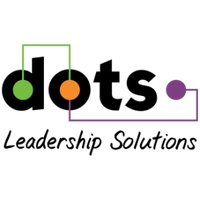|
Previously in this series, I covered the various phases of building a kick-ass team, including the ‘Start Up’ phase, ‘Building the Team Identity’ phase, ‘Bust Through the Barriers’ phase and ‘Kum Ba Yes’ phase. By now, if you’ve implemented all of my suggestions, you should be experiencing the ‘High Performance R Us’ phase – high five to you for graduating to a kick-ass leader!
What Does This Phase Look Like? You’ll know the ‘High Performance R Us’ phase when you see your team consistently triumph and achieve goals together. For the most part, they get along, openly discuss ideas, problems and solutions, and most importantly, they share recommendations for improvement, actively solving issues together and demonstrating commitment to the group and company. Generally the climate is positive and activated for achievement. This kind of high performing team emits a positive vibe, and as such, they make the customer (internal or external) want to work with you. So…now what? What do you do once you’ve successfully attained a high performing kick-ass team? Some say great teams eventually come to an end, but I like to think its more of a metamorphosis–just like a butterfly, your people undergo a change that gives each individual courage and esteem, which often means they will move along. Kick Ass Leaders Shift Gears At this point, some members of your team will either take on new roles within the team or move along, triggering a change to the whole dynamic. Similarly, this may also be a time when you prepare to make your own move, or you earn that well-deserved promotion! Lets look at how you can either course correct to help your team through changes or how you can begin to wrap up so you are ready to make a move: Course Correction After the team dynamic changes or the team divides after having been together for a long time, you may notice a shift in peoples’ behaviours. Watch out for complacency, disengagement or repeated illnesses. Even the highest performing employees can become frustrated with changes–they are usually the first to exhibit fluctuations in behaviour. Keep an eye on things like:
These are often symptoms of disengagement or complacency. How to Respond
Wrapping Up With Your Team If you’ve instead decided to make a move and depart from your now, high-functioning team, it’s imperative that you take right steps to leave them on great terms and in great shape. Parting ways can be difficult, but if you follow the wrap up checklist below, you’ll be sure to leave on a positive note. Check In – take time to check in with the team to reflect–review the vision and mission you designed in Part 1 and 2 and have your team help you assess the progress. Record what worked and what could have been better, and identify how the team adapted to changing requirements over the duration. Determine what were the best parts of this team and which core competencies made the group most successful and why.
Check Off – take time to celebrate the journey of the team and reflect on the growth of each team member. Sit down with a coffee and make a list of how you’ve seen each of them grow as you look back over the time you spent together. Be sure to exchange written feedback so they can keep track of their progression and enjoy the fruits of their labour – this can be done using formal performance review tools, emails or, better yet, hand written notes. Thank everyone who helped the team succeed and encourage team members to write notes to support people from other areas in the business or to vendors/suppliers who were instrumental in the success. Send a summary to your boss or present the overview at a peer meeting to acknowledge progress of the team. And don’t forget to book a fun gathering too – coffee, ice cream, drinks or an outing together will allow you to clink glasses and leave on a high note.
Check On – if you haven’t done it already, be sure to communicate to your management and HR department who on your team has high potential and may be ready to take on leadership roles. Be sure to have a development plan laid out for those specific individuals, to ensure they work on acquiring the missing skills needed to make the leap to the next level. You can continue to be a mentor whether you continue to be their boss or not.
Check Out – one of the best things about having a high performing team is the ability to export some of your talented people to other areas of the organization. Reach out to various leaders you know in other areas of the business and connect them with team members who you feel would be valuable contributors. This is a great way to help your people shine and begin kicking off their own amazing team! You can bet they will come to you as they go through their own kick-ass team development.
I hope you’ve enjoyed the journey of kick-ass team building–no doubt, you’ve noticed some consistent themes. Becoming a Kick-Ass Leader takes a great deal of effort, a lot of communication, and the ability to know when to be tough, when to take the reigns or when to let your people soar. As always, I’m at your service if you’d like help in dealing with the various phases of building your team. Reach out any time.
0 Comments
|
Most Popular Posts:
AuthorElaine Adamson is a leadership consultant with Dots Leadership Solutions Inc. A natural dot connector. Passionate about coaching team effectiveness and leadership development she shares over 25+ years of real-life tips and tricks that really work! 
Elaine believes you can discover and leverage strengths to forge a strong team dynamic despite business challenges or organizational change.
She posts some great articles on Linked In too! Topics of Interest
All
Archives By Date
November 2022
|
Specialties |
Company |
|


 RSS Feed
RSS Feed